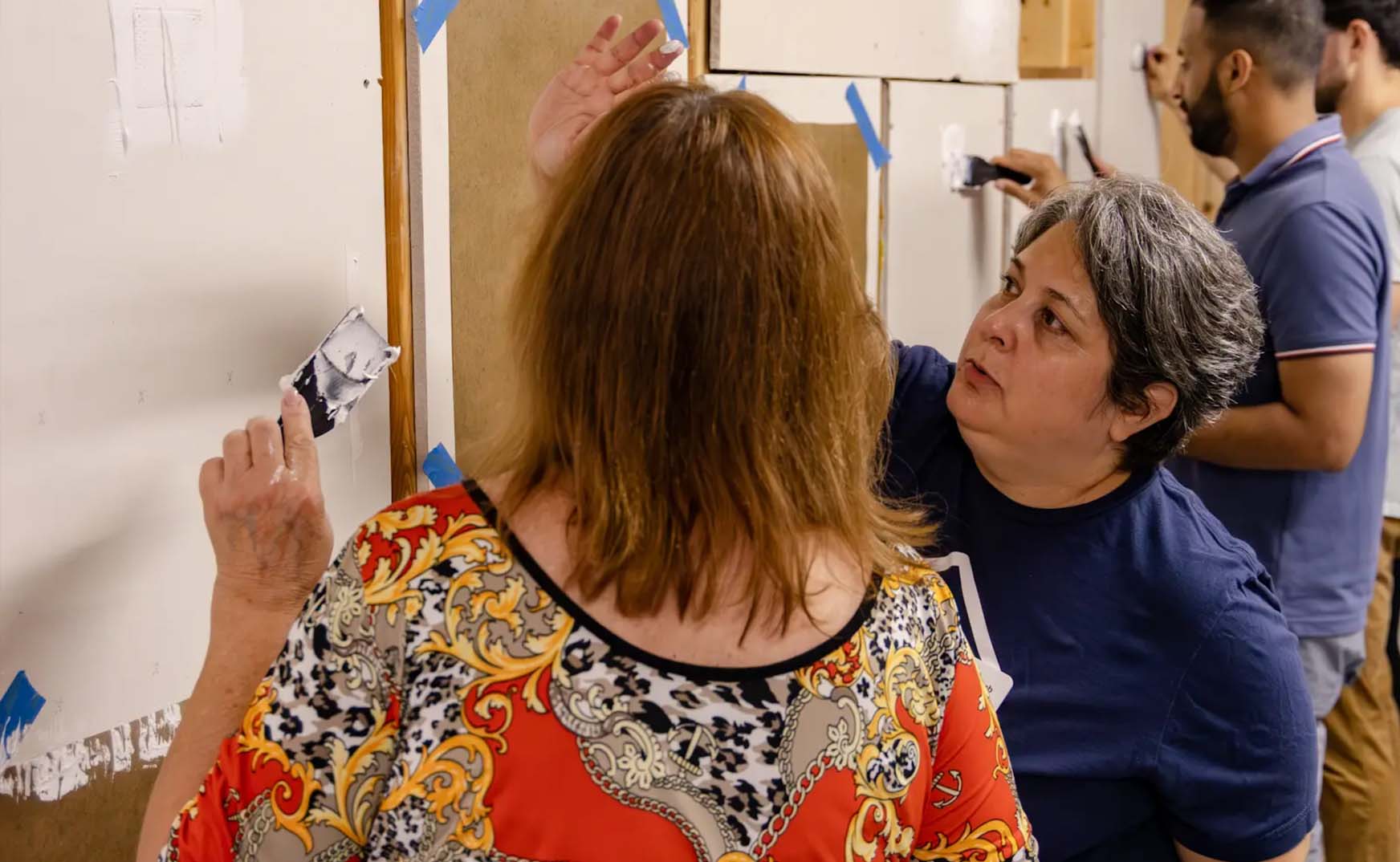
From repairs to improvements to simple maintenance, projects are part of homeownership. When it comes to tackling them, we’ve found there are two kinds of people in the world: the kind that plan to figure it out as they go, and the kind that watch 5 YouTube videos before attempting to change the air vent filter.
Regardless of where you fit in, the decision to take on a task yourself rather than call in a professional comes down to comfort and confidence. Common home maintenance undertakings vary a great deal in terms of the level of skill involved and the consequences of an unsuccessful first attempt.
Here are our top five home projects, ranked both by difficulty and the ease of correcting mistakes so that you can decide when to head to the hardware store and when to call a handyman.
Difficulty: 🔨
The Stakes: 😅
No matter how carefully you maintain your home, the caulk around your sink, shower, or bathtub will need to be replaced periodically. The good news is, if you’ve ever frosted a cake, caulking should feel pretty approachable.
Gently remove the old caulk using a plastic putty knife and apply painter’s tape to ensure you get a uniform line (just be sure to remove it while the caulk is still wet).
Perfection isn’t a requirement, but practice can help you get comfortable handling the caulk gun before you apply anything to your fixture. Grab a piece of cardboard or other disposable surface and lay down a few beads to get an idea of how much pressure is required. Once you get started, a wet fingertip is a perfect tool for smoothing out imperfections.
The stakes could not be lower: if you aren’t happy with the results, scrape them out while the caulk is still wet and try, try again.
Difficulty: 🔨🔨
The Stakes: 😅
When studs expand and contract with weather changes or someone steps on a ceiling joist in the attic, that pressure can cause nails and screws to pop through your drywall.
This cosmetic issue is a fairly simple fix, but it does require basic familiarity with power tools. To correct it, you’ll need to drill new drywall screws into the affected stud about 1” from the popped nail on either side.
From there, you can either hammer the popped nail back in or use the claw of your hammer to remove it. Spackle, sand, paint, and you’re back in business.
If the idea of wielding a drill or restoring your wall to a perfectly smooth surface gives you some anxiety, our Drywall Basics and Tool Skills labs will have you patching like a pro.
Difficulty: 🔨🔨
The Stakes: 😅😅😅
While not technically complicated (most televisions come with the necessary hardware included), successfully mounting a TV comes down to finding a stud and ensuring that your mounting bracket can actually support its weight.
A 65” TV weighs in excess of 50 lbs, so if any of your supporting screws aren’t securely attached to wood, your drywall doesn’t stand a chance. Holes can be patched (see above), but the prognosis is poor for a flatscreen that has fallen off the wall.
If you’re at all apprehensive about using a stud finder or drilling in screws, taking our Tool Skills class is a great way to prevent a TV funeral. Your newfound knowledge may make you the hero of your friend group anytime someone upgrades their set.
Difficulty: 🔨🔨🔨🔨
The Stakes: 😅
It doesn’t take an engineering degree to build a box, but DIY planters do require the simultaneous use of a few fundamental skills.
Creating something from nothing, even if it’s a simple box, takes planning, familiarity with your materials, and competency with power tools. A sturdy planter (or any other square thing, for that matter) requires accurate measurements and clean cuts, making it a fun challenge for novice DIYers.
Even though accuracy counts, the risks of failure are limited to wasted material, bruised fingers, and a defeated trek to your local garden center. Give it a shot or visit us during open lab hours for some hands-on assistance with your new planter box.
Difficulty: 🔨🔨🔨
The Stakes: 😅😅😅😅
Working with electrical wiring isn’t prohibitively complicated, but it does require a mastery of some basic skills and safety measures.
If you can confidently turn off the breaker and guarantee that no current is flowing, replacing a light fixture is as simple as detaching and reattaching wires. Understandably, however, an unwillingness to be electrocuted turns many people off to attempting electrical work themselves.
Because professional electricians charge a base rate (often in the neighborhood of $200) to make a house call regardless of the complexity of the issue, it’s smart to have basic electrical skills in your back pocket. Our Electrical Basics Lab can give you the knowledge and safety essentials so you’re empowered to choose whether or not you want to involve a pro when it’s time to swap out a light fixture.
To DIY or not to DIY? The choice is always yours -- Home Repair Lab is in the business of giving homeowners options for how they approach maintenance. Get project-ready or stockpile some skills so you’re prepared to triage your next repair.
We can’t wait to help you get better acquainted with your home.